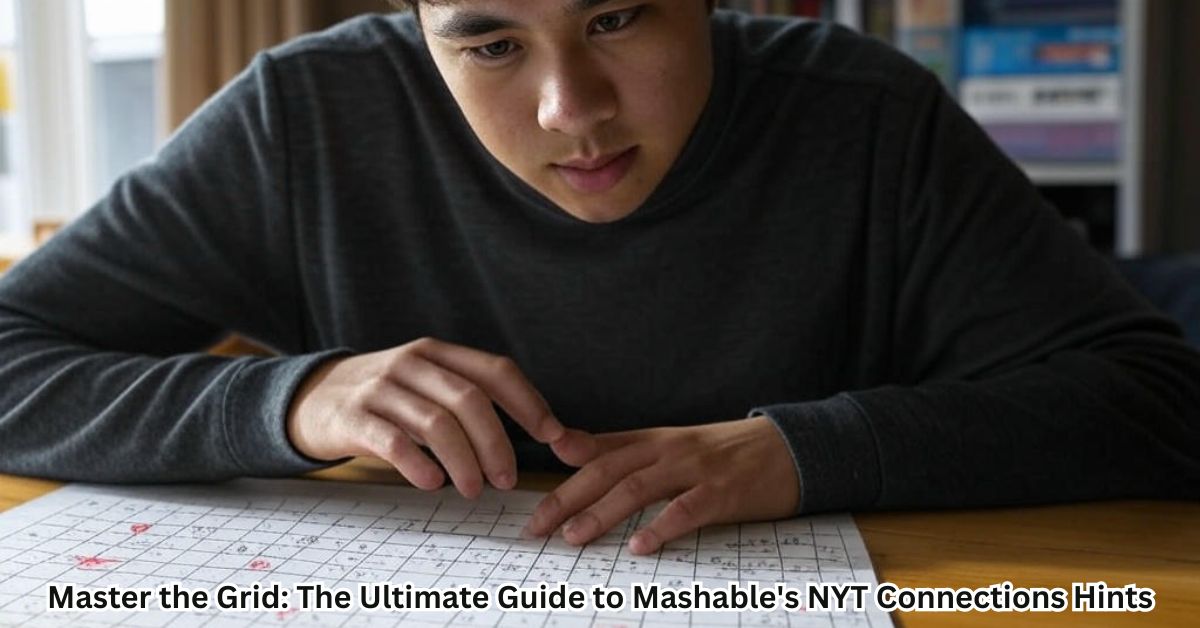Are you struggling with the daily NYT Connections puzzle You’re not alone. Thousands of puzzle enthusiasts turn to Mashable’s hint system to unlock challenging word groupings without spoiling the experience.
This comprehensive guide explores how to leverage Mashable’s hints effectively and transform your puzzle-solving skills.
Introduction to NYT Connections
NYT Connections has quickly become one of the most addictive daily word games since its 2023 launch. Created by puzzle master Wyna Liu, this deceptively simple game challenges players to sort 16 words into four distinct categories of four words each.
Unlike linear puzzles, Connections test your lateral thinking abilities. You must identify relationships between seemingly unrelated words. This unique format requires both vocabulary knowledge and creative thinking.
The game features four difficulty levels, each color-coded for easy reference:
- Yellow (Easiest): Obvious categories like animals or foods
- Green (Medium): Related concepts or fields
- Blue (Challenging): Word relationships or usage patterns
- Purple (Most Difficult): Obscure or punny connections
The daily reset occurs at midnight Eastern Time, giving players a fresh challenge every day. Each puzzle has a unique number, which Mashable references in their hint articles.
Decoding the Connections Puzzle Format
Before diving into Mashable’s hint system, it’s important to understand what makes NYT Connections tick. The 4×4 grid presents 16 words that must be grouped into four categories.
The color-coding system indicates both difficulty and scoring potential:
- Yellow groups are worth 1 point
- Green groups are worth 2 points
- Blue groups are worth 3 points
- Purple groups are worth 4 points
Common patterns in puzzles include:
- Word forms: Words that can be paired with another word
- Thematic groupings: Items belonging to a larger category
- Linguistic tricks: Homophones, double meanings, or puns
- Cultural references: Movie titles, song lyrics, or famous quotes
NYT Connections limits players to four incorrect attempts, creating the perfect environment for hint systems to thrive. This limited-attempt format means strategic hint usage is essential.
Mashable’s Approach to Connections Hints
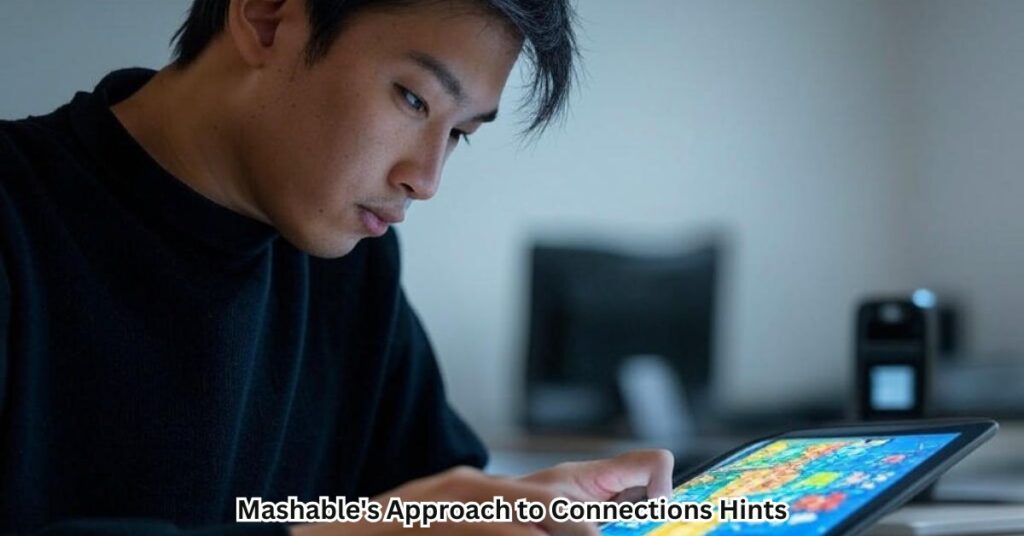
Mashable has developed a sophisticated approach to providing NYT Connections hints that stands out in the puzzle community. Their method balances assistance with preservation of the solving experience.
Mashable’s tiered hint system offers progressively more revealing clues:
- Category hints: Vague descriptions of what connects the words
- Word pattern hints: More specific guidance about relationships
- Partial answers: One or two words from each category
- Complete solutions: Full answers for those truly stuck
This graduated approach lets players choose their level of assistance. You can take just enough help to get unstuck without spoiling the entire puzzle. The semantic relationships between words gradually become clearer with each hint level.
Mashable’s update schedule is remarkably consistent. New hints appear within hours of each puzzle’s release. This reliability has built trust within the puzzle community and made Mashable the go-to resource for Connections players.
Breaking Down Mashable’s Hint Structure
Mashable’s hint structure is designed to maximize usefulness without spoiling the fun. Let’s analyze how they construct their hints.
Category clues form the foundation of Mashable’s hint system. These cleverly worded descriptions point toward the theme without giving it away completely. For example, rather than directly stating “Types of birds,” Mashable might say “These creatures might visit your backyard feeder.”
Word pattern hints dig deeper, often pointing out structural elements:
- “Words that can follow ‘snow'”
- “Things you might find in a kitchen”
- “Words containing double letters”
This approach helps players recognize linguistic patterns they might have missed initially. The hints often highlight part of speech patterns or word forms that connect the groups.
Mashable’s visual presentation enhances accessibility. They use:
- Bold text for category hints
- Color-coded sections matching the game’s difficulty levels
- Collapsible sections to prevent accidental spoilers
This format allows readers to gradually reveal more information as needed. It’s particularly helpful on mobile devices, where many players access hints during their morning commute or coffee break.
READ MORE THIS BLOG : Chef Gotxen Godolix: The Culinary Revolutionary Transforming Modern Gastronomy
Real Examples of Mashable Hints in Action
Nothing illustrates Mashable’s hint system better than seeing it applied to actual puzzles. Let’s examine some real examples.
Yellow Category Example (Easiest)
For a yellow category containing APPLE, CHERRY, LEMON, and ORANGE, Mashable’s hint progression might look like:
- Category Hint: “These items might be found in a produce section”
- Word Pattern Hint: “They all grow on trees”
- Partial Answer: “APPLE and ORANGE belong in this group”
This example demonstrates how Mashable gradually narrows the focus. The first hint points to food items generally. The second hint eliminates vegetables from consideration. The partial answer confirms the pattern for those still stuck.
Purple Category Example (Hardest)
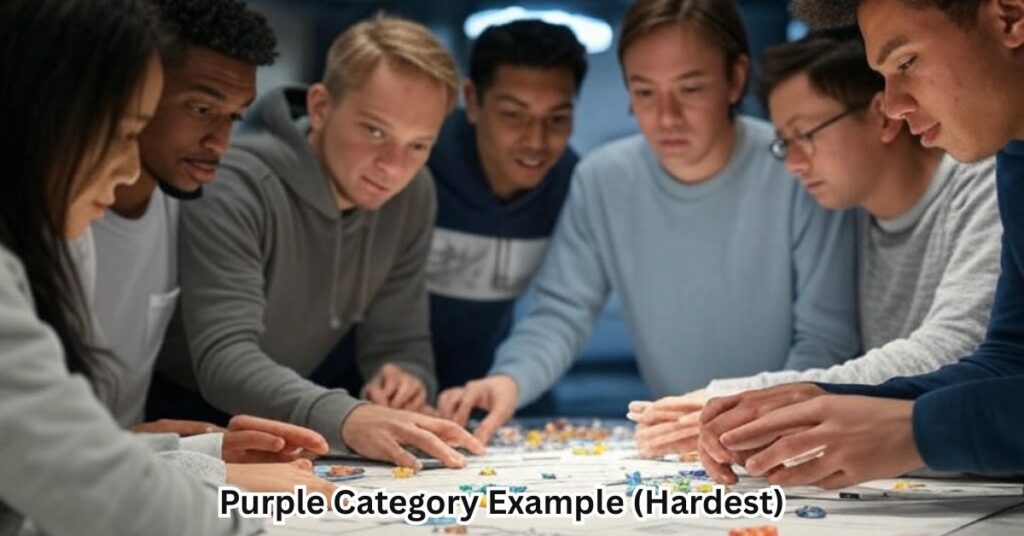
For a purple category containing FLIES, LIES, PIES, and TIES, Mashable’s hint progression would be more subtle:
- Category Hint: “Look closely at what these words have in common”
- Word Pattern Hint: “Consider how these words are pronounced”
- Word Pattern Hint 2: “These words all rhyme with ‘eyes'”
- Partial Answer: “FLIES and TIES belong in this group”
This purple category shows how Mashable handles the most challenging connections. The hints progressively guide players toward recognizing the phonetic pattern of rhyming words without immediately giving away the answer.
Difficult Mixed Case
For a blue category containing CAST, EDITION, MOLD, and STAMP, Mashable’s approach addresses words with multiple meanings:
- Category Hint: “Think about creating multiple copies”
- Word Pattern Hint: “These words can all function as verbs”
- Word Pattern Hint 2: “These all relate to manufacturing processes”
- Partial Answer: “CAST and MOLD belong in this group”
This example highlights how Mashable handles homographs words with multiple meanings. The hints help players focus on the specific definition relevant to the connection, aiding in disambiguation of potentially confusing terms.
Advanced Techniques for Puzzle Solving
Beyond just using Mashable’s hints, there are sophisticated strategies that top Connections players employ. These techniques can help you solve puzzles faster and with fewer hints.
Pattern recognition strategies involve looking for common structures:
- Word length patterns: Are all words in a group the same length?
- Part of speech patterns: Are they all verbs, nouns, or adjectives?
- Prefix/suffix patterns: Do they share common beginnings or endings?
Word association techniques can uncover less obvious connections:
- Try creating sentences using each word in the same position
- Consider idiomatic expressions containing the words
- Think about cultural contexts where these words appear together
Elimination methods work backward to solve puzzles:
- Identify the most obvious group first
- Remove those words from consideration
- Look for patterns among remaining words
- Repeat until all groups are identified
Dealing with deliberately misleading connections is a crucial skill. NYT Connections often includes red herring words that seem to fit in multiple categories. These cognitive techniques help you avoid common traps.
When and How to Use Mashable’s Hints Effectively
Strategic hint usage can enhance your puzzle-solving skills over time. Here’s how to get the most from Mashable’s hint system.
The progressive hint strategy works like this:
- Attempt the puzzle completely on your own first
- If stuck after two incorrect guesses, check category hints only
- Make another attempt based on these hints
- If still stuck, check word pattern hints
- Only check partial or complete answers as a last resort
Identifying mental roadblocks helps determine when hints are appropriate:
- Fixation block: When you can’t see beyond an incorrect pattern
- Vocabulary block: When words have meanings unknown to you
- Conceptual block: When the category itself is unfamiliar
Learning from hint patterns improves your skills for future puzzles:
- Notice which categories consistently trip you up
- Pay attention to recurring themes in Mashable’s hints
- Keep a puzzle journal tracking which hints were most helpful
Building your solving intuition comes from mindful practice with thematic groupings and contextual meaning. After using hints, replay the puzzle mentally to identify where your thinking went wrong and apply these lessons to tomorrow’s puzzle.
Mashable’s Hint Community and Resources
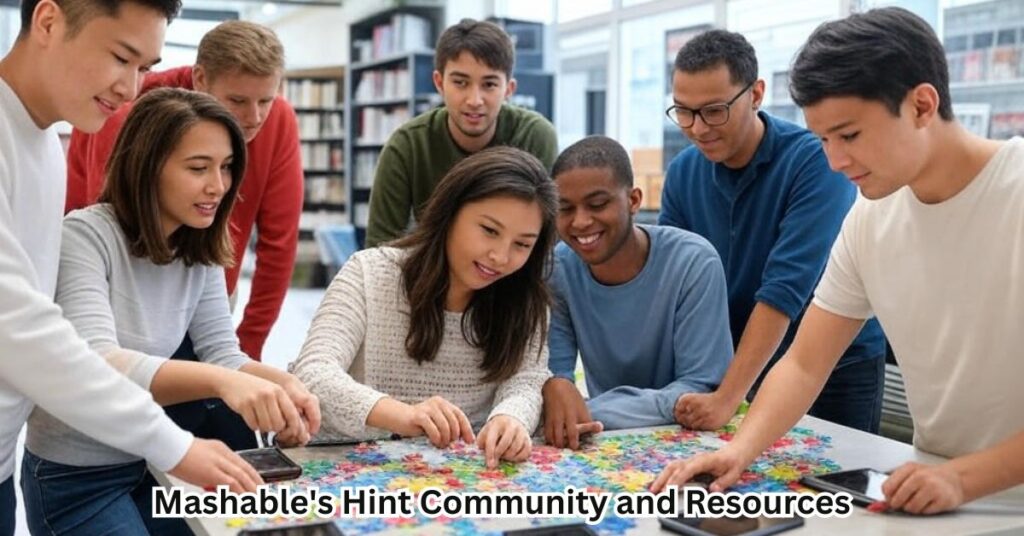
Mashable has fostered a vibrant community around their NYT Connections hints. This ecosystem extends beyond just the hints themselves.
Discussion forums and comment sections under hint articles create spaces for:
- Sharing alternative solving approaches
- Discussing particularly clever or difficult connections
- Helping fellow puzzlers without revealing full answers
Social sharing features integrate with platforms like:
- Twitter (#NYTConnections)
- Reddit (r/NYTConnections)
- Facebook (NYT Connections Fans groups)
This community aspect transforms solo puzzle-solving into a shared experience. Players can learn from each other’s approaches and develop new puzzle strategies together.
Mashable has created companion resources including:
- “Connections Concepts”: A glossary of common category types
- “Pattern Library”: Collection of recurring word relationships
- “Difficulty Calendar”: Tracking puzzle difficulty trends
This robust ecosystem has solidified Mashable’s position as the premier Connections hint resource for both beginners and experienced players.
Comparative Analysis with Other Hint Sources
While Mashable leads the field, several other sources provide Connections hints. Each has distinctive strengths and limitations worth considering.
NYT’s official hint system offers:
- Guaranteed accuracy (coming from the puzzle creators)
- Minimal spoiler risk with their single-hint approach
- Integration directly within the game
However, many players find it too limited, offering just one level of assistance when more nuanced help is needed.
Reddit’s r/NYTConnections community provides:
- Crowdsourced hints with multiple perspectives
- Real-time help through comment threads
- Creative alternative groupings not considered by developers
The downside Quality varies widely, and spoilers are common despite moderators’ efforts to contain them.
Twitter hint accounts offer concise hints that fit Twitter’s format but lack Mashable’s nuanced progression of difficulty levels. They’re quick but often miss the depth needed for truly difficult puzzles.
This comparison highlights why many players prefer Mashable’s balanced approach. They combine timely publication, depth of analysis, and community engagement in a way other platforms don’t.
READ MORE THIS BLOG : 31 Heartfelt Birthday Paragraphs for Your Best Friend
Tips from Connections Masters
What separates casual players from Connections masters Expert players use specific strategies to maintain their streaks.
Timing strategies play a crucial role:
- The “two-minute rule”: If stuck for over two minutes, shift approach
- Category scanning: Spend 30 seconds initially just identifying potential categories
- Word relationship timing: Allocate time based on word familiarity
Category recognition shortcuts help identify patterns quickly:
- Look for words that share the same number of syllables
- Notice words that all begin or end with the same letter
- Identify words that all fit a particular sentence structure
Memory-building exercises improve long-term performance:
- Review missed connections daily to reinforce patterns
- Create personal category lists from past puzzles
- Practice creating your own Connections-style categories
Visual mapping techniques aid spatial thinkers:
- Arrange words physically (or mentally) in different groupings
- Use color-coding in notes to track potential matches
- Draw connecting lines between words that might be related
These experts emphasize that consistent play builds a mental library of connection types. This library becomes invaluable for solving future puzzles quickly.
Troubleshooting Common Connections Challenges
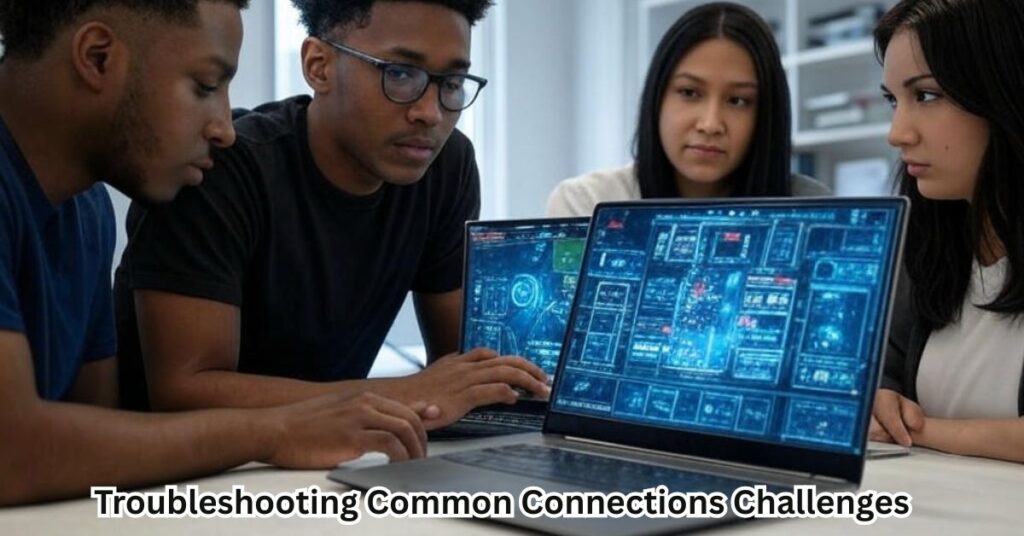
Even with Mashable’s hints, certain puzzle challenges consistently trip up players. Here’s how to overcome them.
Dealing with split groups and red herrings requires vigilance:
- Split group example: Words about weather spread across multiple categories
- Red herring example: Words that rhyme but belong to different groups
Strategy: Before committing to a group, check if each word might fit multiple patterns through careful linguistic tricks analysis.
Managing limited attempts effectively:
- Never waste an attempt on a group you’re uncertain about
- Always verify your group contains exactly four words
- Use the process of elimination on your final attempt
Overcoming frequent stumbling blocks:
- Homograph confusion: Words with multiple meanings (BASS)
- Category overlap: Words that could fit multiple themes
- Cultural knowledge gaps: References outside your experience
When to restart vs. when to use hints:
- First attempt failure: Continue without hints
- Second attempt failure: Check Mashable category hints
- Third attempt failure: Use word pattern hints
- Final attempt approaching: Consider partial answers
Special challenge: Puzzles using deliberately ambiguous words. For these, Mashable often provides “disambiguation hints” explaining specific word contexts to clarify contextual meaning.
Frequently Asked Questions
Where exactly can I find Mashable’s NYT Connections hints?
Mashable publishes daily Connections hints in their Games section. The URL typically follows the format mashable.com/article/nyt-connections-hints . They’re also accessible through Mashable’s homepage.
Are Mashable’s hints available for free?
Yes! Mashable’s hints are completely free and don’t require a subscription or account creation. This accessibility has contributed to their popularity among Connections players.
How soon after a new puzzle releases does Mashable post hints?
Mashable typically publishes hints within 3-4 hours of a new puzzle’s midnight ET release. For especially difficult puzzles, they sometimes publish updates with additional clarification later in the day.
Does Mashable provide hints for past puzzles?
Yes, Mashable maintains an archive of hints for all previous Connections puzzles. This resource is valuable for players working through the backlog or studying pattern types.
How does Mashable create their hints?
Mashable’s gaming editors solve each puzzle independently. They then craft hints based on the solving process, identifying which aspects might trip up players while avoiding direct spoilers.
Conclusion
Mashable’s NYT Connections hints have transformed how thousands approach this challenging puzzle. Their tiered hint system strikes the perfect balance between assistance and autonomy, allowing players to develop their pattern recognition skills while providing just enough help to keep the game enjoyable.
Whether you’re a beginner struggling with your first puzzle or an experienced player looking to perfect your technique, Mashable’s hints offer the right level of guidance for your needs. The structured approach to categorization and word relationships helps build the mental frameworks needed for independent solving.

Bolt is a seasoned SEO expert with a passion for content writing, keyword research, and web development. He combines technical expertise with creative strategies to deliver exceptional digital solutions.
